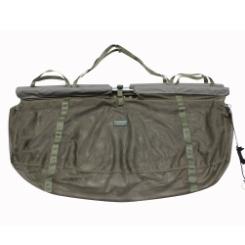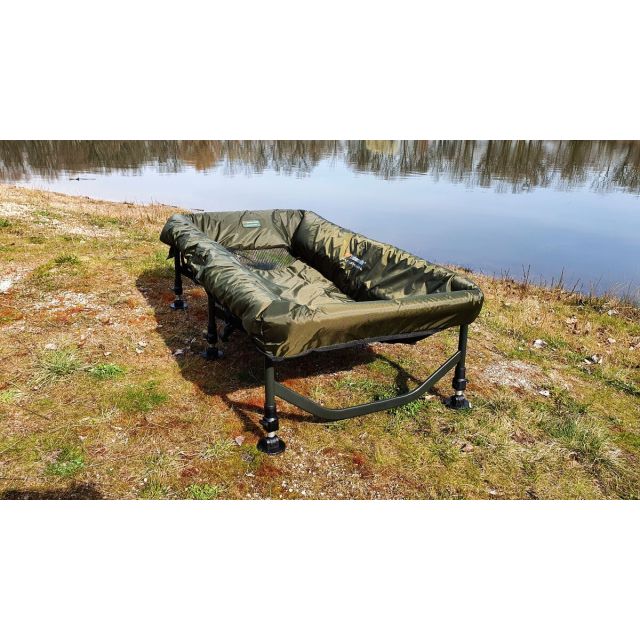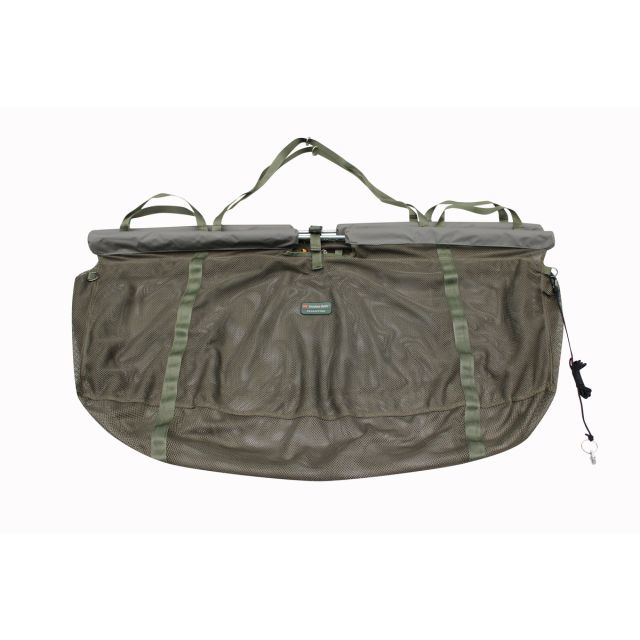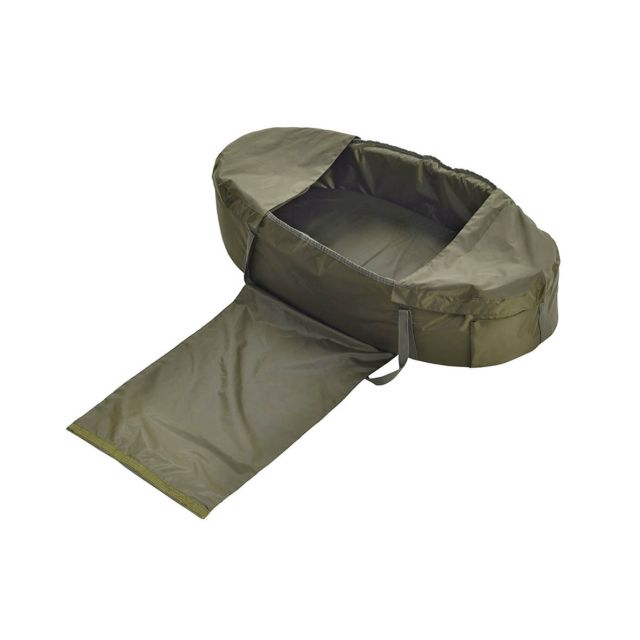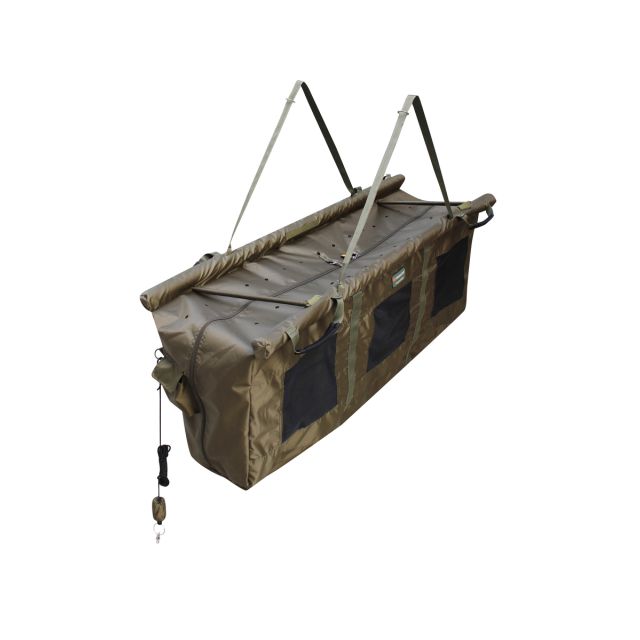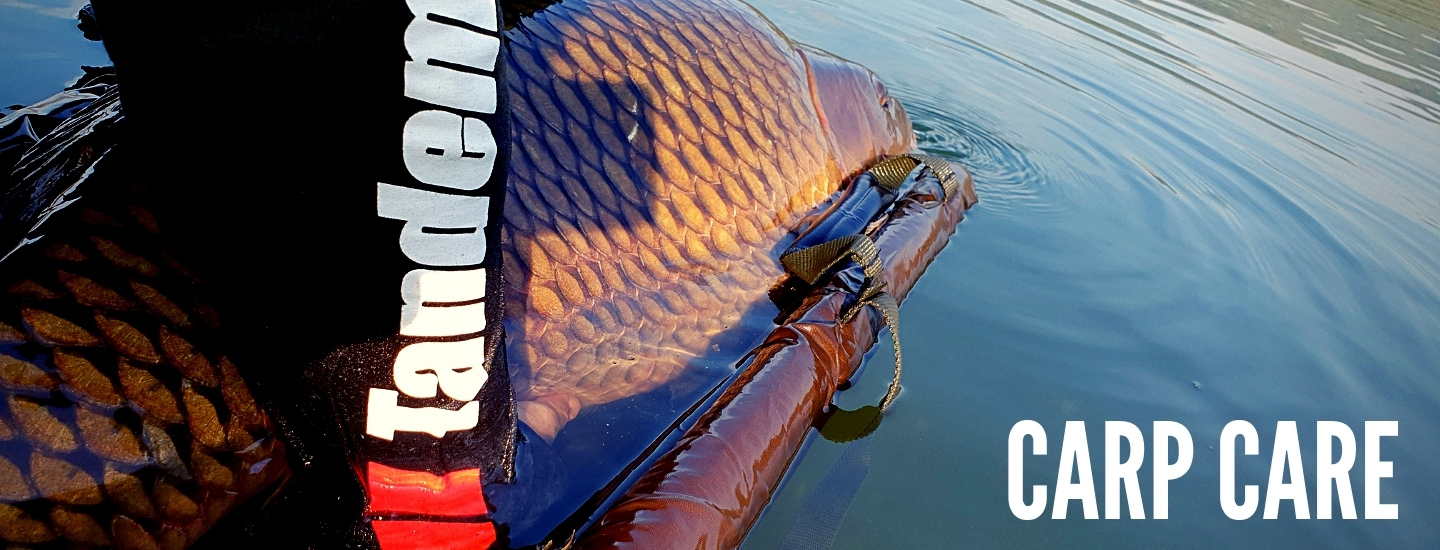
Carp Care
Releasing the carp you catch in good condition is the basis of our hobby.
Surely you are aware of how responsible you are as an angler for the fate of the fish you catch. What's more, you indirectly influence their population. So in order to catch fish now and in the future, we should all take part in consciously releasing them and taking care of their condition.
It doesn't matter whether you caught a real specimen or the proverbial "Christmas carp". Each of these fish certainly gave you a lot of fun and a dose of adrenaline, which is the main reason for pursuing this hobby. Out of respect and gratitude, as well as out of concern for the future fate of our Polish fisheries, the habit of releasing fish should be the primary domain of every angler.
A lot has been said about the need to release fish (although, unfortunately, sometimes it turns out that not enough has been said). We would like to focus on one more important issue, namely the condition of the prey returning to the water.
The equipment of a responsible hunter.
Let's face it - if you catch the fish of a lifetime, you will surely want to take a photo with it and show the world all its assets. So do it wisely. If you want to take care of the condition of the fish, as an angler you should equip yourself with basic products for safely taking the fish out of the water and keeping them on the surface.
This is what you should bring with you:
-
A good, adequately sized landing net
-
A bag for weighing and storing the fish
-
A mat or cradle
-
Wound disinfectant
Prepare for your fish of a lifetime in advance!
It is a good idea to prepare the spot for hooking the fish beforehand, preferably at the very beginning of fishing. It may be the moment right after casting or hauling the sets. All this to keep the time the fish stays out of the water as short as possible.
Proper preparation is only a few steps:
-
Set up your landing net and leave it close to your fishing spot.
-
Lay out a cradle or roll out a mat.
-
Put them in the right place - close to the water, but not in the path between you and the rods. You can look around and position the mat or cradle in a safe yet attractive place to take photos.
-
Lay out a bag on the mat or cradle to weigh the fish.
-
You can also prepare a scale and lay out a stand for it if you have one.
-
Have your hooking and disinfecting equipment ready, as well as a bucket or larger water container for wetting your catch.
-
You can wet the mat and weighing bag beforehand - but be careful, especially in hot weather, that the water in the cradle is not too hot and the mat heated. If you are fishing with a friend, you can always ask them to soak the mat just before you pull the fish out of the water.
How to pull the fish out safely?
If you prepare well for the retrieve, the rest will be a pleasure. You just have to be careful and conservative. Here are some tips to help you:
Picking up fish from the water
Here an important aspect will be the landing net, which should be close to you. If the fish is already in the net, remove the head of the landing net from the handle and roll it towards the carp. This will make it easier not only to lift but also to carry the fish to the mat.
Carrying
Make sure that the fish is properly positioned in the net and that its fins stick to its body. Lift the net as gently as possible and during the transfer take care that the carp does not hit any obstacles along the way. Then place the fish on a mat or cradle that has been properly wetted with water beforehand.
Also wet your own hands
Properly wet equipment and hands will not deprive the fish of its protective mucus, which protects its body from cuts.
Unhook the carp
This has to be done skilfully, gently but firmly, so that the carp feels as little pain as possible, and carefully, so as not to leave too big a wound. When removing the hook from the mouth it should be caught in two points, pressed firmly with the thumb against the ear of the hook and with the index finger to prevent it from moving.
Weighing
Use a weighing bag for this purpose. It is best to do this over a mat or cradle to avoid accidentally dropping the fish, which can lead to death. The best time for weighing is always right after the haul, when the fish is tired, less mobile and allows us to interfere more.
Photos
If the fish is properly held, you have time to take some photos. Remember to lift the carp just above the cradle or mat so that it doesn't fall to the ground for you during a sudden jerk. Be careful not to mess with the fish's gills with your fingers. It is best to place one hand under the gill fin and the other on the anal fin, being careful not to put pressure on the belly. Don't lift the fish too high, preferably kneel just off the mat.
Watering
Remember to keep water on the fish at all times when it is on the bank.
Releasing
Carry the fish prepared for release in a weighing bag or on a mat, the bag will be safer. Once in the water, you watch the fish and wait until it is ready to swim away, helping it to regain its vitality by keeping it in the right position.
When the fish is ready, you let it swim away.
At Tandem Baits you will find everything for safely catching and keeping fish.
The welfare and condition of the fish is of the utmost importance to us. That is why we make every effort to ensure that our products meet anglers' expectations but are also safe for the specimens.
The welfare and condition of the fish is of utmost importance to us. That is why we make every effort to ensure that our products meet the expectations of anglers and are safe for the fish.
Here you will find:
Mats and cradles
This is where your fish land after being fished and wait to be released from the hook. Unhooking a fish is not always as easy as it seems, especially when you are dealing with wild carp. It is therefore extremely important to have a safe surface to put it on.
There are two main types of hooking mats available, although there are a few crossovers between the two.
-
The first option is the basic mat. This is usually a flat mat that you simply lay out on the ground. Some of our mats come with an extra soft edge, which not only serves to keep water in the mat, but also provides extra protection for the fish. Many of these flat hooking mats can be folded or rolled up, allowing them to be easily transported or clipped to luggage. Some of our mats also have a flap where you can kneel down to protect your knees.
-
The second option is a carp cradle. It is a product which really resembles a cradle, only adapted for fish, although children could feel equally safe in it.:-) Cradles have a padded base and protected, soft, high sides. Thanks to this construction, it is more difficult for a fish to get out, even if it is very lively. This product should certainly be of interest to amateurs of aggressive and big specimens, who regularly face them in a tough fight. Not only will the fish not jump out of the cradle, but it will also have a chance to calm down faster. Some of our cradles have a cover that allows you to cover the fish while you set up your weighing equipment or camera.
Weighing bags and fish carp sacks
This is an extremely important product that is essential in ensuring the safety of the fish you catch. By paying attention to the nomenclature, it is easy to deduce their use.
Our range includes both weighing bags and storage bags, as well as products that combine both options.
Our bags and pouches will not only help you weigh your fish safely, but also allow for proper storage when needed. These are very safe products, creating a place where the fish can recover and return to its natural home unscathed.





